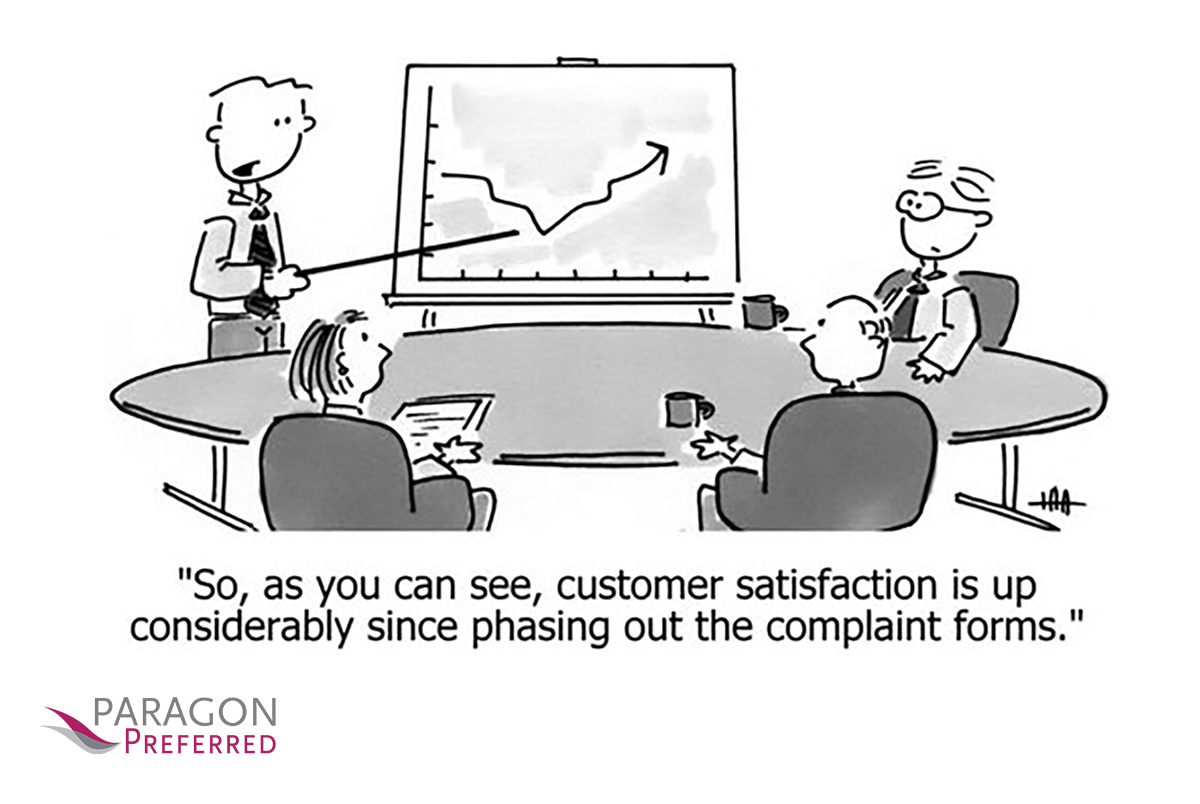5 Tips to Help You Measure the Quality of Your Customer Service
It’s easy to determine the operational success of measurable items such as sales, profit margins, and debt ratios. But what about those items that are not as easily measured, such as customer service? During this pandemic, what role does customer service play in the success of your business when you want to retain your current customers and be prepared to attract new customers?
Here are a few facts from consumer reports pertaining to customer service:
- 90% of Americans use customer service as a factor in deciding whether or not to do business with a company.
- 49% of American consumers switched companies last year due to poor customer service.
- Consumers are willing to spend 17% more on a company that has outstanding customer service.
- It takes 12 positive customer experiences to make up for one negative experience.
- 73% of companies with “above average” customer experiences perform better financially than their competitors
From personal experience, I can honestly say that customer service can make or break an FBO. But how do you know if your employees are providing good customer service especially when your staff size may have been reduced because of COVID-19?
Here are five tips to help you measure the quality of your customer service:
- Ask your customers
A simple concept, but an effective one. You can do this formally through a survey or informally by simply asking customers how their experience was. By doing this, you have the opportunity to address the feedback (good or bad) quickly. If the customer had a poor experience, you could address it on the spot and your customer can walk away feeling satisfied. This would increase your chance of being used again or at a minimum reduce the odds of the customer sharing their negative experience among the masses. - Assess the competition
I’ve always found that a good way to determine how well my business is doing is by comparing it with other “like” businesses. It’s important to know how your competitors score in terms of their customer service. Are your competitors friendly? How do they handle customer complaints? How easy do they make it for customers to report a bad experience? Visit your competitors and see for yourself how well their customer service ranks compared to yours. Make sure to adjust your practices (and training) where necessary. - Remember, there is no such thing as “common sense”
Often, I have experienced managers stating, “It is common sense not to (fill in the blank).” Over the years, I have realized that there is no such thing. What may seem “common knowledge” to one person is not necessarily common to another. It is very important that you clearly communicate your expectations to your team to minimize any negative customer experiences. For example, if you expect your team on their break to pick up used papers, coffee cups, or trash in your lobby – tell them! - Lead by example
As a leader, it is your responsibility to set the tone for your team. If your actions as a leader contradict what you are asking your team to do (not walking your talk) than you will lose their trust. Without trust, effective management is not possible. Bad management results in confusion, stress, and high turnover among the team. The outcome equals poor overall customer service. I’ve found that the best leaders spend more time listening and less time talking. - Look at the numbers
Ultimately, I think the bottom line speaks volumes. If your sales are on the up, chances are your customers are satisfied. On the other hand, if business is not quite booming as you’d hoped, it wouldn’t hurt to reevaluate your approach to customer service. You may need to adapt your customer service responsibilities to reflect new COVID-19 procedures.
Of course, there are many other tips that could be shared. Please take a moment to comment and let me know your thoughts about how you measure your customer service.
Source for statistics:
blog.hubspot.com/service/customer-service-stats



Comments are closed